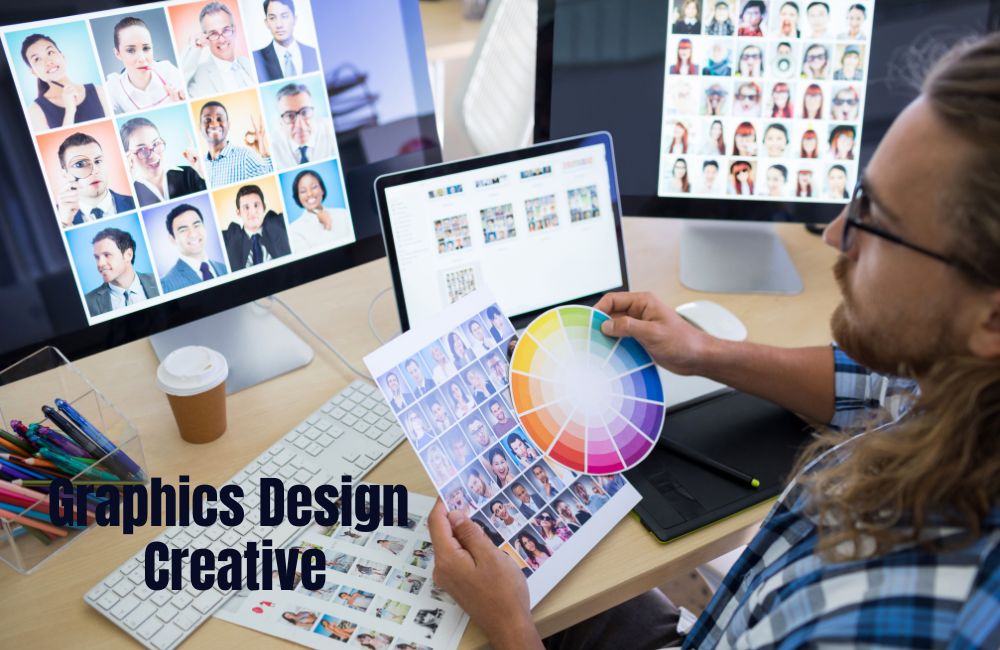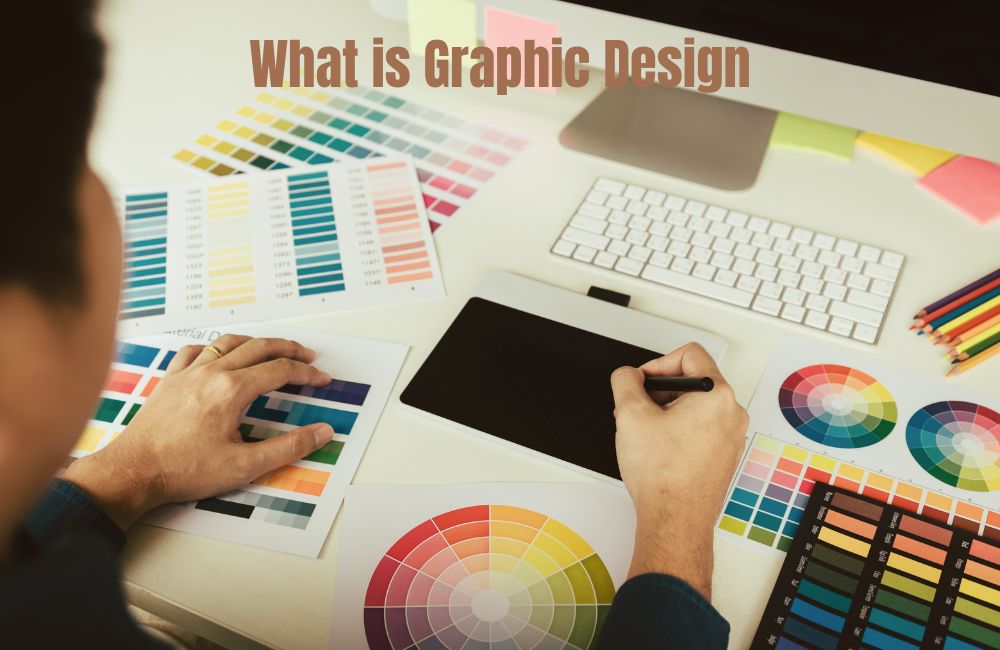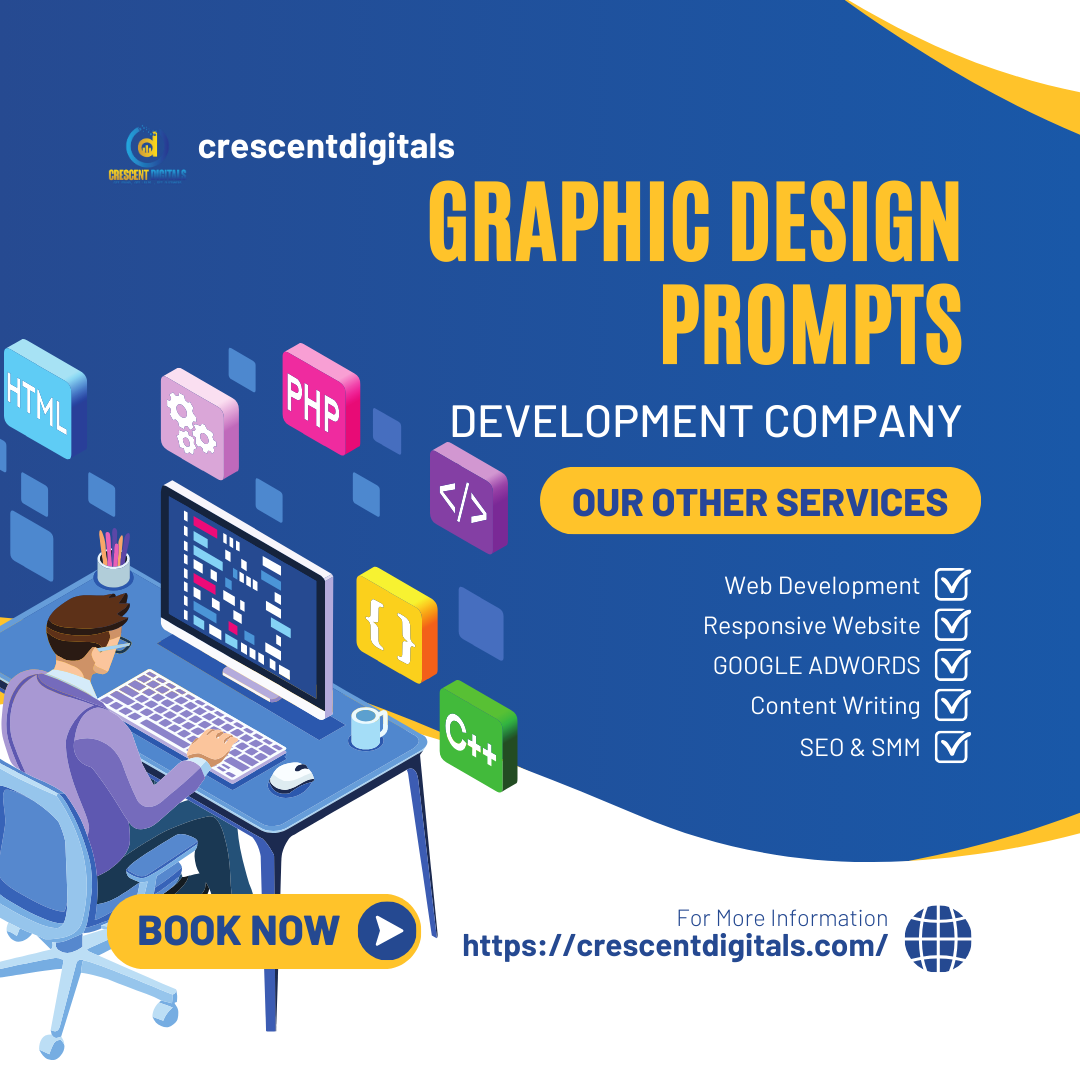Is Graphic Design Hard? Graphic Design can be both challenging and easy, depending on various factors including your ability to simplify complex processes.

Credit: www.shutterstock.com
Understanding The Difficulty Of Graphic Design
Graphic design is a multifaceted field that requires a combination of technical skills, creativity, problem-solving, and an understanding of various design principles. While some may perceive graphic design to be an easy discipline, it is important to delve deeper into the factors that contribute to its difficulty.
By understanding the challenges and intricacies of graphic design, one can better appreciate the expertise and skill that goes into creating visually appealing and effective designs.
Factors That Contribute To The Difficulty Of Graphic Design
Graphic design encompasses a wide range of tasks and responsibilities, each with its own set of challenges. Here are some key factors that contribute to the difficulty of graphic design:
- Technical proficiency: Graphic designers need to have a strong command of various design software and tools, such as Adobe Photoshop, Illustrator, and InDesign. Mastering these programs and staying updated with the latest advancements can be time-consuming and require continuous learning.
- Adaptability: Graphic designers often work across different industries and sectors, each with its own unique requirements and design trends. Adapting to different client needs and staying versatile can be challenging.
- Workload and deadlines: Graphic designers often have to juggle multiple projects simultaneously while adhering to strict deadlines. Managing time effectively and maintaining quality under pressure can be demanding.
- Client communication: Understanding client expectations, gathering feedback, and effectively communicating design concepts can be complex. Balancing creative freedom with client requirements is an art in itself.
- Critical thinking: Graphic design involves problem-solving on a visual level. Designers must analyze the objectives, target audience, and constraints of a project, and devise creative solutions to communicate the desired message effectively.
The Role Of Creativity And Problem Solving
Graphic design is at the intersection of creativity and problem-solving. These two elements play a crucial role in making graphic design a challenging discipline:
- Creativity: Graphic design requires originality and an ability to think outside the box. Designers need to come up with innovative ideas, unique concepts, and visually appealing compositions that capture attention and effectively communicate messages.
- Problem-solving: Graphic designers are tasked with finding solutions to design challenges. They need to analyze complex information, distill it into visually comprehensible components, and create designs that not only look good but also serve their intended purpose.
Perceptions And Perspectives On Graphic Design
Perceptions of graphic design’s difficulty can vary depending on personal experiences and perspectives. While some may find certain aspects of graphic design challenging, others may thrive in those exact areas. It is crucial to understand that the difficulty of graphic design is subjective and can differ from person to person.
In conclusion, graphic design is a demanding discipline that brings together technical skills, creativity, problem-solving, and effective communication. By acknowledging the various factors that contribute to its difficulty, one can gain a deeper appreciation for the expertise and effort involved in creating impactful designs.

Credit: www.linkedin.com
Challenges In Graphic Design
Graphic design can be a challenging field, demanding a great deal of creativity, technical skill, and the ability to meet deadlines and manage multiple projects simultaneously. Designers often face various hurdles that can make their work stressful.
From handling tight deadlines and managing difficult clients to coping with stress and burnout, these challenges can test the limits of even the most experienced graphic designers. Let’s delve into some of the key challenges in the world of graphic design:
Dealing With Tight Deadlines And Multiple Projects
One of the biggest challenges in graphic design is working under tight deadlines and juggling multiple projects simultaneously. Designers often find themselves facing time constraints, where they need to deliver high-quality work within short timeframes.
This can put immense pressure on designers, jeopardizing the quality of their work and adding to the stress levels.
To navigate these challenges, graphic designers need to prioritize their tasks effectively. Time management becomes crucial, as designers must allocate time for each project and break them down into manageable steps.
By setting realistic deadlines and establishing a well-organized workflow, designers can ensure that they meet clients’ expectations without sacrificing the quality of their work.
Another helpful strategy for handling tight deadlines and multiple projects is effective communication. Open and transparent communication with clients and team members allows designers to set clear expectations, address any potential issues, and manage their workload efficiently.
Managing Difficult Clients
Dealing with difficult clients is another significant challenge faced by graphic designers. Clients may have unrealistic expectations, lack clear communication, or be indecisive, which can make the design process more demanding and time-consuming.
When faced with challenging clients, designers need to develop strong communication and problem-solving skills. It’s essential to establish clear expectations from the beginning, ensuring that both parties understand the project goals, timeline, and deliverables.
Regular check-ins and updates can help manage client expectations and prevent any miscommunication or last-minute changes that could impact project deadlines.
Setting boundaries and managing client feedback effectively is also crucial. Designers must be confident in their abilities and be willing to provide explanations and justifications for their design choices when necessary.
By maintaining open lines of communication, being proactive, and finding a balance between accommodating client preferences and maintaining design integrity, designers can navigate challenging client relationships more effectively.
Coping With Stress And Burnout
The graphic design industry can be fast-paced and demanding, leading to stress and burnout. Designers face constant pressure to produce innovative and visually appealing designs, which can take a toll on their mental and emotional well-being.
To mitigate stress and burnout, designers need to prioritize self-care and maintain a healthy work-life balance. Taking regular breaks, practicing stress-relief techniques such as meditation or exercise, and finding creative outlets outside of work can help rejuvenate designers and enhance their overall well-being.
Additionally, seeking support from peers and joining professional communities can provide valuable resources and opportunities for collaboration and learning. Connecting with others who understand the challenges of the design industry can offer a sense of validation and provide valuable insights for coping with stress and overcoming burnout.
In conclusion, graphic design has its fair share of challenges. From managing tight deadlines and difficult clients to coping with stress and burnout, the field demands a combination of technical skill, creativity, and effective time management.
By developing strategies to navigate these challenges and prioritizing self-care, graphic designers can thrive in this dynamic and rewarding profession.
Tips For Mastering Graphic Design
Mastering graphic design can be challenging, but it’s not impossible. With dedication, creativity, and a willingness to learn, anyone can become proficient in this field. By breaking down complex processes into manageable steps and staying updated with the latest design trends, you can overcome the difficulties and succeed in graphic design.
Acquiring Hard Skills: Typography And Problem Solving
When it comes to mastering graphic design, acquiring hard skills is crucial. Two essential hard skills that every graphic designer should focus on are typography and problem-solving.
Typography: Typography plays a critical role in graphic design as it involves arranging typefaces to communicate effectively. To master typography, designers need to understand the principles of font selection, spacing, and hierarchy.
By experimenting with different font combinations, sizes, and alignments, designers can create visually appealing and engaging designs. It’s important to stay updated with the latest typography trends and techniques to stay ahead in the field.
Problem Solving: Graphic design often involves solving complex visual problems. As a designer, being able to analyze client requirements, gather information, and translate ideas into visually impactful designs is essential.
Developing problem-solving skills requires critical thinking, creativity, and attention to detail. By breaking down complex design challenges into smaller, manageable steps, designers can tackle projects more effectively and efficiently.
Developing Soft Skills: Communication And Time Management
While hard skills are important, developing soft skills is equally crucial for mastering graphic design. These skills not only help in client interactions but also contribute to a more efficient workflow.
Communication: Effective communication is vital in graphic design to understand client needs and convey design concepts. Designers should be able to clearly articulate their ideas, actively listen to client feedback, and collaborate with team members. Good communication skills can enhance client satisfaction, reduce rework, and lead to successful design outcomes.
Time Management: Time management is a key skill for graphic designers, especially when working with tight deadlines and multiple projects. Designers should prioritize tasks, set realistic deadlines, and allocate sufficient time for research, ideation, and revisions.
By managing time effectively, designers can deliver high-quality work within the given timeframes, reducing stress and ensuring client satisfaction.
Self-care Practices For Graphic Designers
Graphic design can be demanding and stressful at times, but practicing self-care can help maintain balance and enhance overall well-being.
- Take Breaks: It’s important to take regular breaks during long design sessions to relax the mind and prevent creative burnout. Stepping away from the computer screen, going for a walk, or engaging in a hobby can refresh the mind and boost creativity.
- Maintain a Healthy Work-Life Balance: Striking a balance between work and personal life is crucial for mental and physical well-being. Allocate time for activities outside of work, such as spending time with family and friends, pursuing hobbies, or engaging in exercise.
- Practice Stress Management Techniques: Designers should have effective stress management techniques to cope with the pressures of the job. This can include mindfulness exercises, deep breathing techniques, or engaging in activities that help relieve stress.
- Seek Support: Whether it’s through networking with fellow designers or seeking guidance from mentors, having a support system can provide valuable insights, motivation, and reassurance during challenging times.

Credit: www.amazon.com
Frequently Asked Questions Of Is Graphic Design Hard
Is It Stressful To Be A Graphic Designer?
Being a graphic designer can be stressful, especially when facing tight deadlines and difficult clients. However, effective time management, communication, and self-care practices can help alleviate stress.
Is Graphic Design A Hard Program?
Graphic design can be both easy and difficult. The level of difficulty depends on factors like your ability to simplify complex processes and manage them effectively. With creative thinking, dedication, and an aptitude for art and design, learning graphic design becomes easier.
What Is The Hardest Part Of Being A Graphic Designer?
The hardest part of being a graphic designer is dealing with creativity burnout, meeting client expectations, tight deadlines, continuous learning, and handling criticism and rejection.
Do You Need Math In Graphic Design?
Math is not a requirement in graphic design, although some basic math skills may be useful when working with measurements or layouts.
Is Graphic Design A Challenging Field To Enter?
Graphic design can be a challenging field to enter due to the need for creativity, technical skills, and staying up-to-date with industry trends.
What Skills Are Important For A Graphic Designer?
Important skills for a graphic designer include creativity, knowledge of design software, strong communication, and the ability to work under pressure.
Is Graphic Design Harder For Beginners?
Graphic design can be challenging for beginners, but with practice, dedication, and continuous learning, it becomes easier to navigate the field.
Are There Any Difficult Aspects Of Being A Graphic Designer?
Being a graphic designer can come with challenges such as meeting client expectations, managing tight deadlines, and dealing with criticism and rejection.
Do I Need To Be Good At Math For Graphic Design?
While being good at math is not essential for graphic design, having a basic understanding of proportions, symmetry, and spatial relationships can be beneficial.
How Long Does It Take To Become A Graphic Designer?
The time it takes to become a graphic designer depends on various factors, such as the level of education pursued and the individual’s learning pace. It can range from a few months to several years.
Conclusion
Graphic design may seem challenging at first, but it ultimately depends on various factors. The ability to break down complex processes into manageable steps plays a significant role in determining the level of difficulty.
While there are challenges such as meeting client expectations, tight deadlines, and continuous learning, managing stress through effective time management and self-care practices can help alleviate these difficulties.
Ultimately, whether graphic design is hard or not depends on your passion, creativity, and dedication to the craft.






